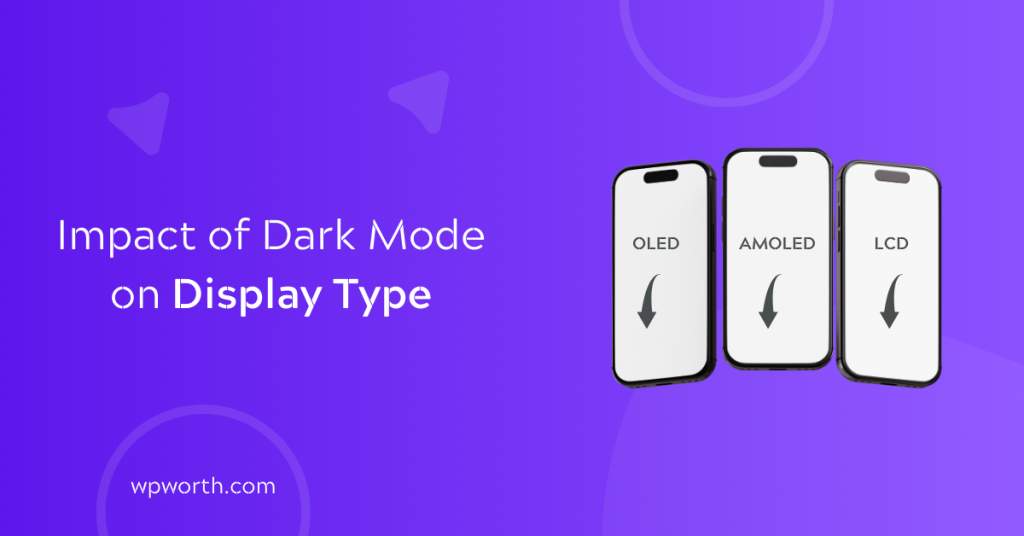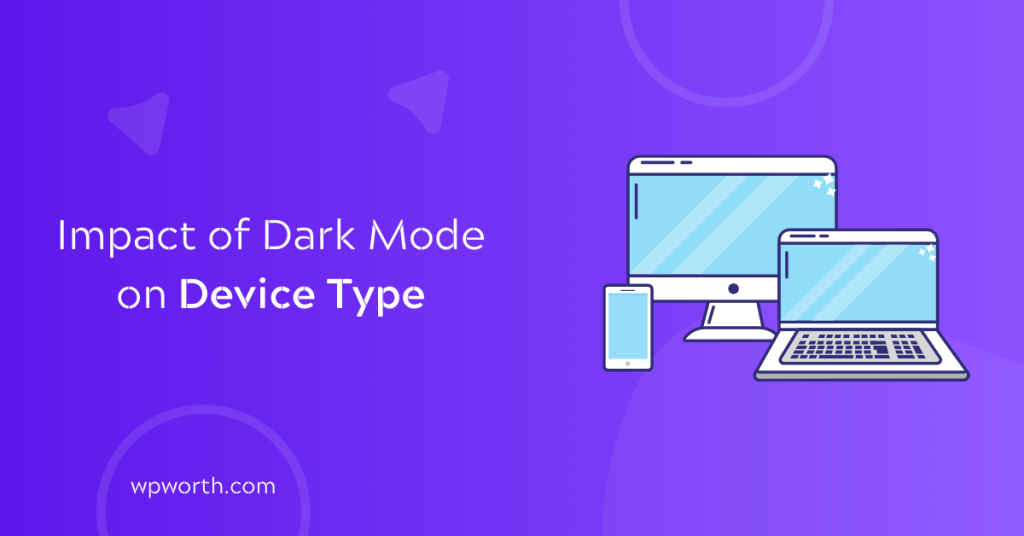Imagine this: it’s late at night, and you’re scrolling through your smart device on bright mode. As bright white screen feels like it’s burning your eyes, you switch to dark mode immediately. Suddenly, everything feels smoother, more comfortable.
But wait—does this simple switch actually save your phone’s battery?
Dark mode has become a trendy feature in apps, devices, or websites. It’s easier on the eyes, especially in low light. But beyond comfort, many wonder if it does anything for your battery life.
In this article, we’ll dive into whether dark mode really helps your battery last longer or if it’s just another design trend. Let’s uncover the truth behind the buzz!
Table of Contents
- What Is Dark Mode?
- How Does Dark Mode Technology Work?
- Advantages of Using Dark Mode
- Does Dark Mode Really Save Battery?
- Impact of Dark Mode on Display Type
- Impact of Dark Mode on Device Type
- How Much Energy Does Dark Mode Save?
- Dark Mode vs Light Mode Battery Test
- Ways to Implement Dark Mode on Different Platforms
- FAQs & Answers
- Conclusion
What Is Dark Mode?
Dark mode is a display setting that switches the background of your screen from bright white to a darker shade, typically black or dark gray.
This feature is designed to make reading easier on the eyes, especially in low-light environments.
Instead of the usual bright, glaring background, dark mode uses dark tones for the background with lighter text, creating a more relaxed visual experience.
How Does Dark Mode Technology Work?
Dark mode works by reversing the typical color scheme on your screen, using darker backgrounds and lighter text. But behind the scenes, it involves several technical changes at the hardware and software levels.
At the core, the technology relies on pixels and how they emit light. On traditional LCD screens (which are most common), the screen uses a backlight to illuminate all the pixels, regardless of whether the content is dark or light. In OLED (Organic Light Emitting Diodes) screens.
However, each pixel emits its own light, meaning that darker areas require less power.
When you enable dark mode, apps and websites adjust their color schemes to dark mode by making the background black or dark gray and the text white.
This shift reduces the amount of light needed to display the content, especially on OLED screens. For instance, in an OLED display, black pixels are essentially turned off, meaning they draw zero power.
Scientific Example: Consider an OLED display in dark mode: when displaying a black screen, the pixels in the dark areas don’t light up at all. This results in a significant reduction in power consumption compared to a white screen, where all pixels are fully illuminated. In contrast, on an LCD display, the backlight is always on, meaning the battery savings from dark mode are minimal.
Advantages of Using Dark Mode
Dark mode isn’t just a trendy design choice – it offers a range of benefits that go beyond aesthetics. Here are some of the main advantages:
- Reduced Eye Strain: In low-light environments, bright screens can cause eye fatigue. Dark mode reduces glare, making it easier on your eyes, especially in dark rooms or at night. This helps prevent discomfort, like dry eyes or headaches, which is common when using your device for extended periods.
- Better Sleep Quality: Exposure to bright screens, especially the blue light they emit, can disrupt your sleep cycle. By switching to dark mode, the reduced blue light exposure may help minimize its impact on your circadian rhythm, making it easier to fall asleep after using your device at night.
- Improved Battery Life: As we mentioned earlier, dark mode can save battery, especially on OLED screens. Since dark pixels don’t require as much power to display, switching to dark mode can make your device last longer between charges.
- Enhanced Readability in Low-Light Settings: Dark mode can make text more readable when used in dim environments. The high contrast between light text and dark backgrounds improves readability without the need for excessive brightness that can strain your eyes.
- Less Disruption to Your Environment: When you’re using your device in a dark room, a bright white screen can be distracting to others. Dark mode reduces the light emitted from your screen, making it less intrusive to people around you.
Does Dark Mode Really Save Battery?
Yes, dark mode can save battery, but the extent of the savings depends on your device’s display type. On OLED screens, dark mode can significantly reduce battery usage because black pixels are essentially turned off, using no power.
The more dark content on your screen, the less power is needed.
However, on other types of screens, like LCD, the savings are minimal. Since these screens use a constant backlight, switching to dark mode doesn’t reduce the power used by the backlight.
On the other hand, dark mode can save battery on OLED devices too, but the effect might not be noticeable on other types of screens.
Impact of Dark Mode on Display Type

The impact of dark mode largely depends on the type of display your device uses. Here’s a quick look at how dark mode affects different display technologies:
| Display Type | Impact | Explanation |
|---|---|---|
| OLED | Significant (up to 30% or more) | Each pixel emits its own light. Dark pixels are turned off, consuming less power. |
| AMOLED | Significant (similar to OLED) | Similar to OLED, individual pixels turn off, leading to power savings on dark screens. |
| LCD | Minimal or None | Backlight remains on, so dark mode does not reduce power consumption. |
| LED (Edge-lit) | Minimal | Similar to LCD, the backlight is still on, so dark mode doesn’t provide substantial savings. |
Impact of Dark Mode on Device Type

The impact of dark mode on battery life varies depending on the type of device and screen technology. Here’s how dark mode affects common devices:
| Device Type | Impact | Explanation |
|---|---|---|
| iPhone | Significant (on OLED models) | On OLED-equipped iPhones, dark mode can save battery by turning off pixels. |
| Android | Significant (on OLED/AMOLED models) | Similar to iPhones, Android devices with OLED/AMOLED screens see battery savings with dark mode. |
| Laptop (Windows) | Minimal to Moderate (depends on display type) | On LCD screens, little to no battery savings. On OLED laptops, dark mode saves battery. |
| MacBook | Minimal (on Retina/LED displays) | Retina MacBooks (with LED backlighting) won’t see much battery benefit, but OLED MacBooks would. |
| Others (e.g., tablets, monitors) | Depends on the screen type (OLED vs. LCD) | OLED screens benefit most from dark mode, while LCDs see little to no power savings. |
How Much Energy Does Dark Mode Save?
The amount of energy dark mode saves can vary depending on the device and screen technology. Here’s a realistic range of energy savings:
- OLED/AMOLED Displays: Dark mode can save between 20% to 30% of battery life, and in some cases, it can even reach up to 50% for devices displaying predominantly dark content.
- LCD Displays: The energy savings are minimal, typically between 0% to 5%, since the backlight is always on regardless of screen content.
- LED (Edge-lit) Displays: Similar to LCD, energy savings are minimal, generally around 0% to 5%.
These numbers are estimates and can vary depending on the device usage, screen brightness, and the amount of dark content displayed.
Dark Mode vs Light Mode Battery Test
Battery tests comparing dark mode and light mode have shown varying results based on the device type, screen technology, and usage patterns. Below is a summary of typical findings from various tests:
| Device Type | Battery Savings | Test Setup |
|---|---|---|
| iPhone (OLED) | Up to 30% | Test done with screen brightness at 50%, continuous browsing for 1 hour. |
| Samsung Galaxy (AMOLED) | 20% – 25% | Test with 50% brightness, video playback for 1 hour. |
| MacBook Pro (LCD) | Up to 5% | Browsing test for 1 hour, brightness set to 50%. |
| Windows Laptop (LCD) | Minimal savings (2% – 5%) | Test with a standard web browsing session for 1 hour. |
| Android (AMOLED) | 25% – 30% | Video playback test, 1 hour, with 50% brightness. |
Ways to Implement Dark Mode on Different Platforms
Here’s a simplified overview of how dark mode can be implemented across different platforms:
- Smartphones: Most smartphones, including iPhones and Android devices, offer a dark mode option in the display settings, allowing users to toggle between light and dark modes based on preference.
- PCs and Laptops: On Windows and macOS, you can switch to dark mode via the system settings, usually under personalization or display options. Many apps also offer their own dark mode settings.
- Websites: Many popular websites, like YouTube and Twitter, have a built-in dark mode feature that can be activated directly from the website’s settings. Additionally, browser extensions can force dark mode on sites that don’t support it natively. Also for WordPress websites you can use dark mode plugins to switch 1-click dark mode.
- Other Devices: Consoles like PlayStation and Xbox and streaming devices like Roku and Fire TV often include dark mode options in their display or theme settings.
FAQs & Answers
Does dark mode save battery on iPhone?
Yes, on iPhones with OLED displays, dark mode can save 20% to 30% of battery by turning off dark pixels.
Does dark mode save battery on Android?
Yes, on Android devices with OLED or AMOLED screens, dark mode can save 20% to 30% of battery.
Does dark mode save battery on laptop?
It depends on the display type. On OLED laptops, dark mode can save 20% to 30%. On LCD/LED laptops, savings are minimal, around 5% or less.
Does dark mode save battery on MacBook?
On MacBooks with LCD screens, dark mode offers minimal battery savings (around 5%). OLED MacBooks, if available, could save 20% to 30%.
Does dark mode save battery on OLED?
Yes, dark mode saves battery on OLED screens, with savings ranging from 20% to 30% or more, depending on content.
Does dark mode save battery on AMOLED?
Yes, dark mode can save 20% to 30% of battery on AMOLED screens by turning off dark pixels.
Does dark mode save battery on LCD?
No, dark mode doesn’t save battery on LCD screens, as the backlight is always on. Savings are typically 0% to 5%.
Does dark mode save battery on Samsung?
Yes, on Samsung devices with AMOLED or OLED screens, dark mode can save 20% to 30% of battery.
Conclusion
Dark mode can be a useful feature for saving battery life, particularly on devices with OLED or AMOLED screens, where it can save between 20% to 30%.
However, on devices with LCD screens, the savings are minimal. While dark mode may not significantly extend battery life on all devices, it still offers benefits such as reducing eye strain and improving the visual experience, especially in low-light settings.
Whether or not it’s worth using depends on your device, but it’s a simple switch that can make a noticeable difference on the right screen type.

